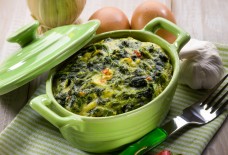SOURCE: VICE
BY: JELISA CASTRODALE
Thirty-five years ago, the news broke that a French Assyriologist had finally,finally managed to translate a recipe tablet that had been in the Yale Babylonian Collection for more than 50 years. Jean Bottéro, who’s also a gourmet chef, decoded the cuneiform text, which essentially cracked the code on some of the world’s oldest known recipes, dating back to around 1,700 B.C.
“[It’s] cuisine of striking richness, refinement, sophistication and artistry, which is surprising from such an early period,” Bottéro told the Los Angeles Times in 1985. “Previously we would not have dared to think a cuisine 4,000 years old was so advanced.”
The tablet that Bottéro translated contained 21 meat-based dishes, and four vegetarian recipes, but that was as far as he could go: Despite his skills in the kitchen, he told the Times that he wasn’t going to try to recreate those meals, mostly because there weren’t a lot of actual steps in each recipe, and because he had to make educated guesses about what some of the ingredients actually were. (The recipes were so complicated and all-around confounding that one Yale professor of Assyriology thought the tablets were actually “magical texts.”)
Although a food historian attempted to recreate one of the stews for an American Oriental Society meeting in 1988, the others haven’t been prepped or tasted by anyone in more than 4,000 years. That all changed last summer, when a team from Yale and Harvard joined forces to reassemble three recipes from Yale’s four culinary tablets: two lamb stews, and a vegetarian recipe that involved beer bread.
“Having an understanding of what the food is supposed to feel and taste like is very important,” Agnete Lassen, an associate curator of the Yale Babylonian Collection, said. “We didn’t know what we were looking for. When we were recreating one of the recipes I kept thinking they were doing this wrong, ‘this is not how I would make this.’ And then when it had boiled for a while it suddenly transformed itself into something delicious.”
The vegetarian recipe, which is called ‘The Unwinding,’ was translated as: “Meat is not used. You prepare water. You add fat. [You add] kurrat, cilantro, salt as desired, leek, garlic. You pound up dried sourdough, you sift, and you scatter [it] over the pot before removing it.”
The meals were all prepared for an event held at NYU’s Institute for the Study of the Ancient World and Department of Nutrition and Food Studies—but since then, the team has continued to enhance their understanding of four recipes from the tablets.
“I was really surprised to find that what is a staple in Iraq today, which is a stew, is also a staple from ancient times, because in Iraq today, that is our daily meal: stew and rice with a bread,” Nawal Nasrallah, a culinary historian and expert on Iraqi cuisine, told the BBC.
“It is really fascinating to see how such a simple dish, with all its infinite variety, has survived from ancient times to present, and in those Babylonian recipes, I see not even the beginnings; they already had reached sophisticated levels in cooking those dishes. So who knows how much earlier they began?”
And looking in the other direction, who knows how future scholars will interpret all of our millions and millions of artistically composed Instagrams. We haven’t exactly provided step-by-step recipes for our descendants either: what are they supposed to do with a picture of an açai bowl and a #blessed?



